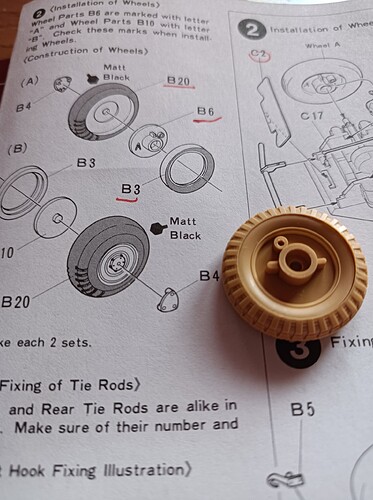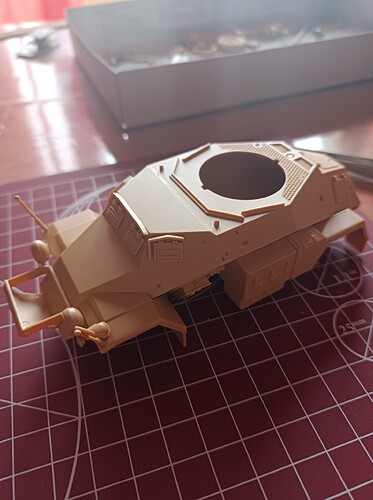So, I got this little kit for about 20€ on Amazon.
The idea was to give a little companion to my previous Panzer 2 model to share the same plastic case which ended up a bit too roomy for such a small tank.
I intend to make it an African theater vehicle too, using the same marking of the Panzer 2.
The kit appears to be much more complicated, there’s LOTS of small hanging bits of equipment and it has a detailed axle (this is my first wheeled model).
It also has some photo-etched parts which I have no clue on how to handle. Can I remove them with the shears/modeling knife or do they require special equipment? Do they require special primers or paint?
So far I just made the axle and glued some hatches on the hull. Now I am afraid to proceed because I think that many of these pieces should be painted before being glued, like the axle itself. And I also would need to paint the bottom of the vehicle before gluing it!
So far, I am really confused. I am quite bad at brush painting and I would prefer to minimize it.
How would you proceed?





